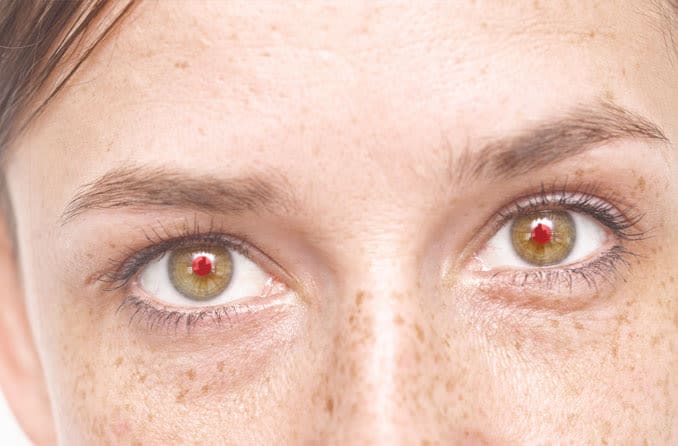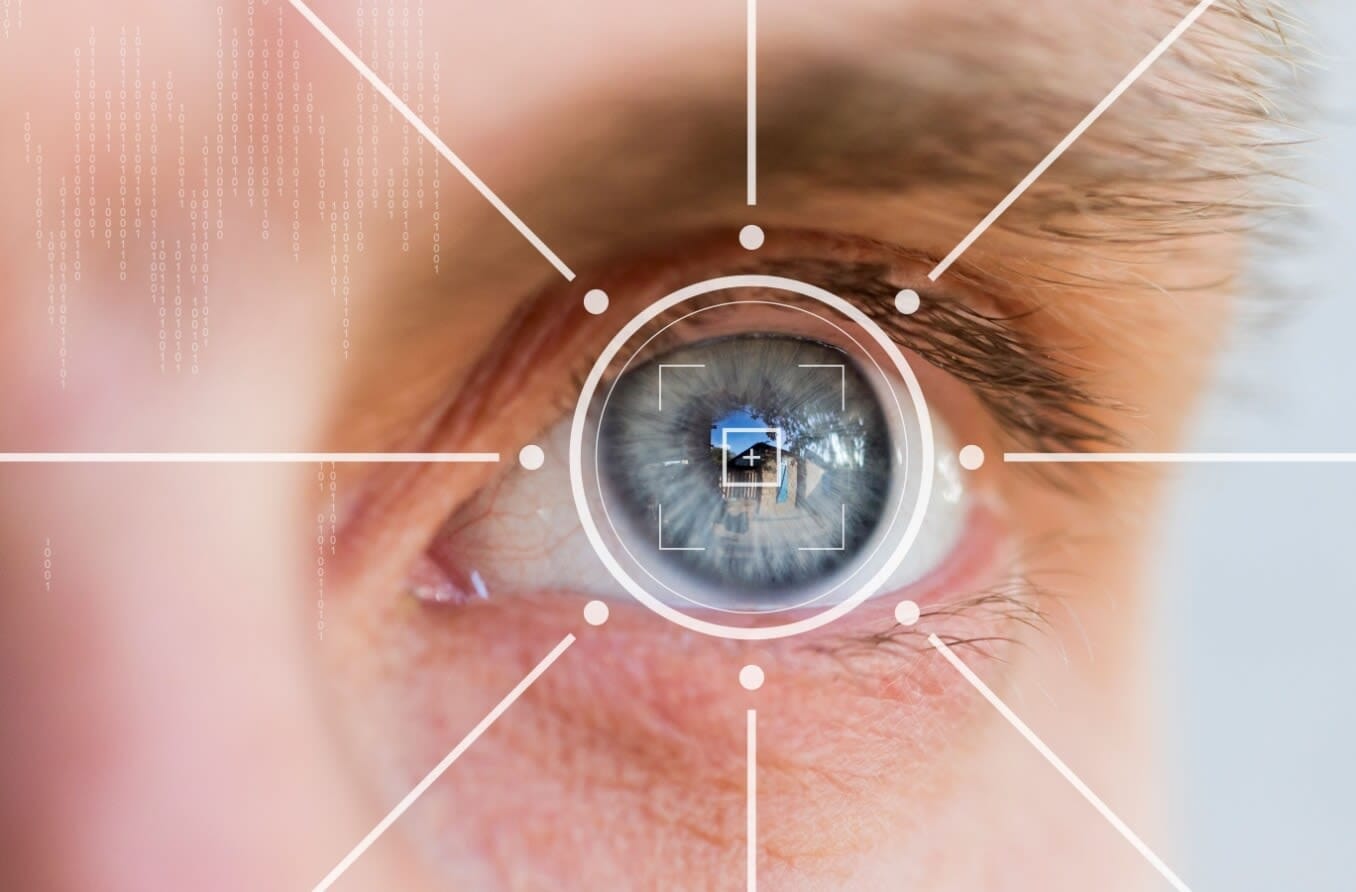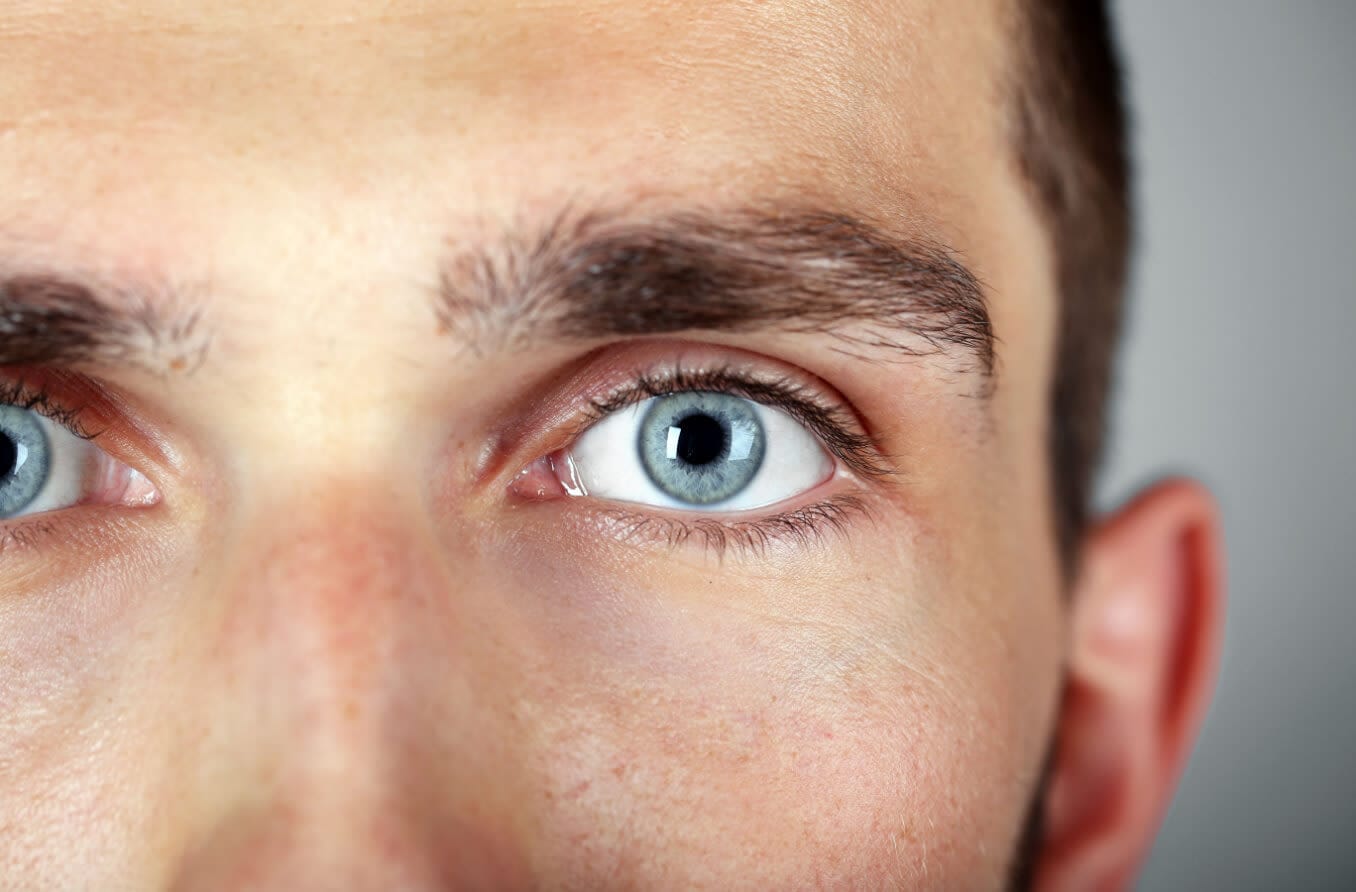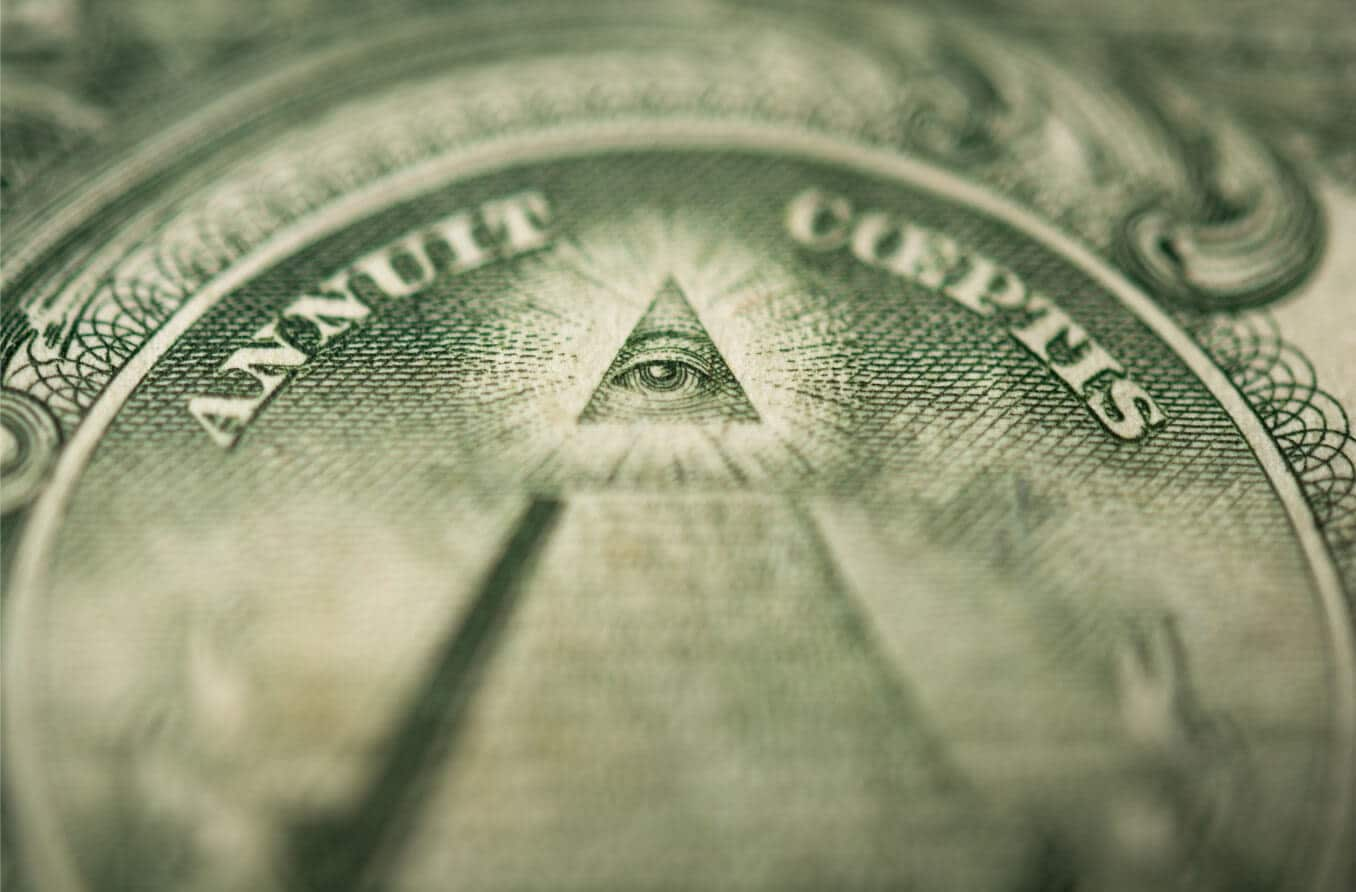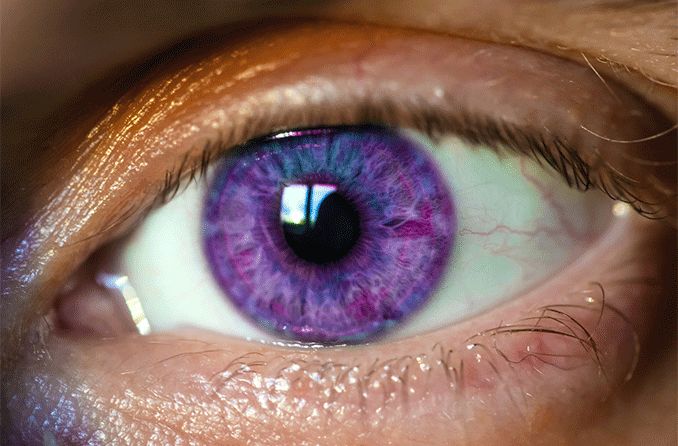Eye direction and lying theory
Neuro Linguistic Programming (NLP) spawned the theory that eye direction is related to telling lies vs. the truth. NLP is a system developed in 1975 by Richard Bandler and John Grinder. The focus of NLP was to understand how people’s personal experiences shape how they process information.
The study of NLP inspired Bandler and Grinder to study eye positions and information processing.
They claimed that a person who was pulling information from a memory would look toward the top right corner of their visual field. This is known as visual recall .
Someone who’s constructing an idea not from memory would look toward the top left corner of their visual field. This is known as visual construct .
Bandler and Grinder further hypothesized that when a person recalls a sound, they would look laterally toward the right. This reaction is known as verbal recall . If they were imagining a new sound, such as a dog singing opera, they would look to the left. This reaction is called verbal construct .
According to NLP, eye behaviors could label just about every aspect of memory recall. Remembering how something feels (kinesthetic), or processing inner dialogue (auditory digital) are also included.
The “right side” or “left side” is relative to the observer’s point of view. The meaning behind each eye direction is reflective of a person who is right handed. The rules would be the opposite for a left-handed person.
Once these hypotheses were published, the public believed them and spread the information. However, the accuracy of the statements weren’t properly tested.
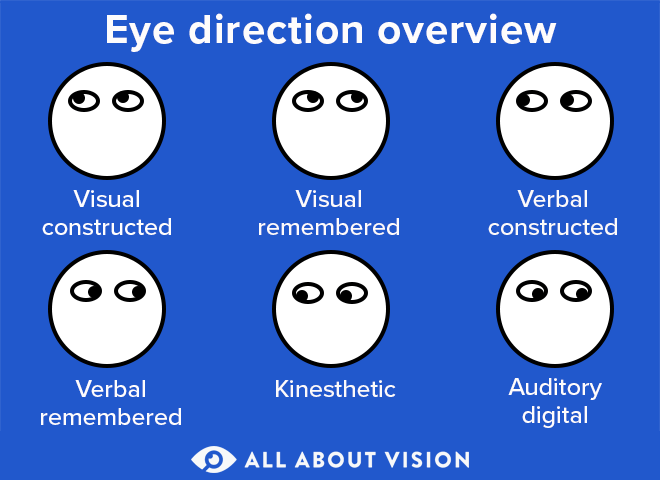
The truth behind eye movement and lying
In 2012, three studies tested the reliability of Bandler and Grinder’s claim about eye movement and truthfulness.
In the first study, right-handed participants were filmed both while lying and telling the truth. Participants were aware that the study was related to lying, but were not told that their eye movements would be tracked.
While answering a series of questions, researchers tracked the number of times a participant looked up and to the right, or up and to the left. These movements were coded and compared to what NLP experts hypothesized.
Study results did not support the hypotheses that upper right gaze indicates lying. Nor that looking up and to the left indicates truthfulness.
In the second experiment, 50 participants were split into two equal groups. They were asked to watch the interviews recorded in the first study. One group of participants was told about the NLP eye movement theory and the other was not.
All participants marked whether they believed the subjects in the videos were lying or telling the truth. They also indicated how confident they were in their observation. Results showed no difference between the accuracy or confidence of the two groups in their assessment of the videos. These results provide no proof for NLP lie detection claims.
In the final experiment, two independent raters watched videos of known liars and truth tellers. Of all the videos viewed by the raters, there were no instances of upper left or upper right gazes.
None of these studies provide any evidence that the NLP theory of eye movement and lie detection are reliable or accurate.
Nonverbal cues and lying
If you’re looking for surefire cues to rely on for pinpointing a liar, you’ll likely end up disappointed. The more research that’s done on the art of lying, the more experts realize that spotting a liar is tough, and humans are particularly bad at finding them.
Scientific studies have been done to test how well police officers are able to detect a truth versus a lie. Results found that the accuracy of detecting when someone was being truthful was 67%. Detecting a lie had an accuracy rate of only 44% — that’s less than chance.
Methods for gauging deceit haven’t improved over the years. The U.S. Transportation Security Administration (TSA) uses a checklist to weed out suspicious travelers going through airport security.
The behaviors on this checklist include:
Whistling
Averted gaze (avoiding eye contact)
Excessive fidgeting or personal grooming
Prolonged stare
Rapid blinking
Exaggerated yawning
Complaining
Though TSA relies on these cues, they are not reliable and have been debunked by researchers. Because what’s suspicious behavior to one person may be normal behavior to another.
For example, avoiding eye contact is considered a sign of respect in some cultures. So, while a TSA agent may view this behavior as suspicious, it’s usually a cultural misunderstanding.
Approximately 3,700 complaints were filed against TSA between October 2015 and February 2018. The complaints alleged civil rights and civil liberties violations related to passenger screenings. This further proves that nonverbal cues are not a reliable or accurate indicator of lying.
SEE RELATED: How important is eye contact to a child’s development?
Verbal clues and lying
Nonverbal cues may not be a good way to spot a liar, but not all hope is lost. Some verbal cues have proved to be more accurate for sniffing out lies, but they’re still not ironclad evidence.
One hypothesis about verbal cues and lying is called the cognitive hypothesis . It explains that the act of lying requires more brain power than telling the truth. As a result, the liar’s behavior will be affected.
This includes speech disturbances (lots of ums and uhs) caused by the cognitive complexity of fabricating a lie. The more complex the lie, the more the liar will hesitate or experience speech disturbances.
Another hypothesis is called the attempted control hypothesis . This hypothesis says that a liar may be aware of the stereotypes or “signs” of deceit. Because of this, they manage their speech, body language and behavior to avoid suspicion.
Other verbal clues that may tip the scale toward falsehood include how the person recalls certain events. Studies show that truth tellers usually have a “tell them everything” strategy. Liars use a “keep it simple” strategy, and provide very few details. They may also avoid including themselves in the narrative.
How to tell if someone is lying
When given the direct question of “is this person lying?” it can be more difficult to trust your gut. However, analyzing details about a person’s behavior can make your instinct a reliable source for lie detection.
Dr. Bella DePaulo conducted a study in which participants were exposed to various liars and truth tellers. The exposure included watching videos, listening to audio clips, reading transcripts and face-to-face.
Participants were instructed to discern whether they thought the person was lying or telling the truth. They were also asked non-direct questions such as:
How comfortable or uncomfortable did the person seem?
How comfortable or suspicious did you feel with this person?
In nearly all instances of questioning, participants distinguished lies from truths better when relying on their answers to the non-direct questions.
So, if you’re trying to determine whether someone is lying to you, relying on your intuition may be your best bet. Ask yourself smaller, less direct questions about the encounter instead of the one big question at hand.
Analyzing different details of the suspect, as well as how you felt during the exchange, may help you uncover the truth you’re looking for.
READ NEXT : Eye behaviors of psychopaths

